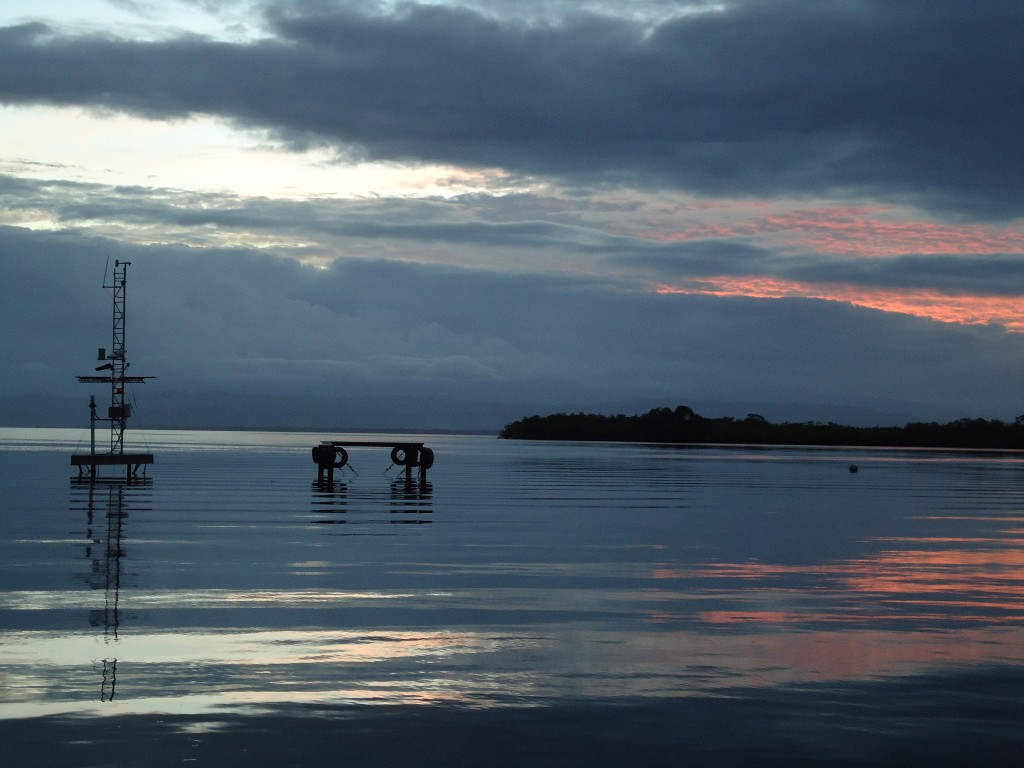by Katrina Lohan
We had very little trouble finding two of the oyster species we needed at three different places. But with only three days left in our trip, we had yet to find Ostrea sp. at more than one location. With our hopes high, we headed toward Portobelo to see if we could find a saline river-like environment that had Ostrea sp. in high enough abundance for us to sample. The drive was gorgeous! We drove along the Atlantic Coast of Panama and stopped at five separate “rivers”, though most of them were pretty small and should probably be called streams instead. We also briefly drove into Portobelo so that we could drive past the old Spanish forts in the city.
We only found Ostrea sp. at one of the rivers, and we didn’t find enough to sample there. Our final stop on our way back to Naos was the French Canal. We had borrowed an inflatable canoe from Mark Torchin, which took us about 20 minutes to pump up. Once we did, we were able to get the canoe into the water and used it to more closely investigate what oysters were growing on the bridge pilings. We had our fingers crossed that it would be Ostrea sp. but, alas, it was Crassostrea sp. instead. Well, I can’t be too upset. While we didn’t get the ideal sampling we were hoping for, it was still a very successful trip!
Next month we head to Merida, Mexico to continue our sampling adventures. Stay tuned!
Complete parasite-hunting stories from Panama >>


